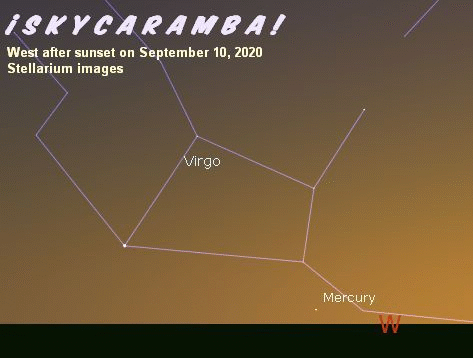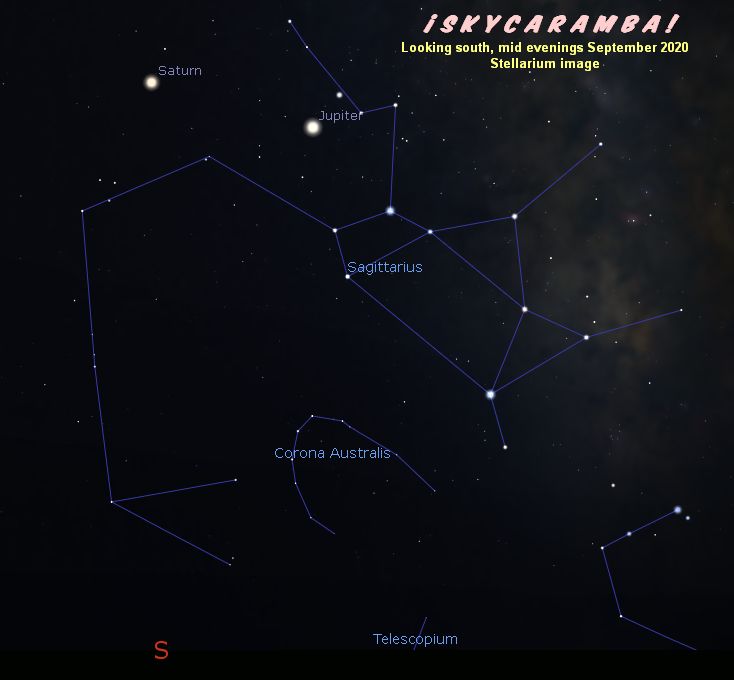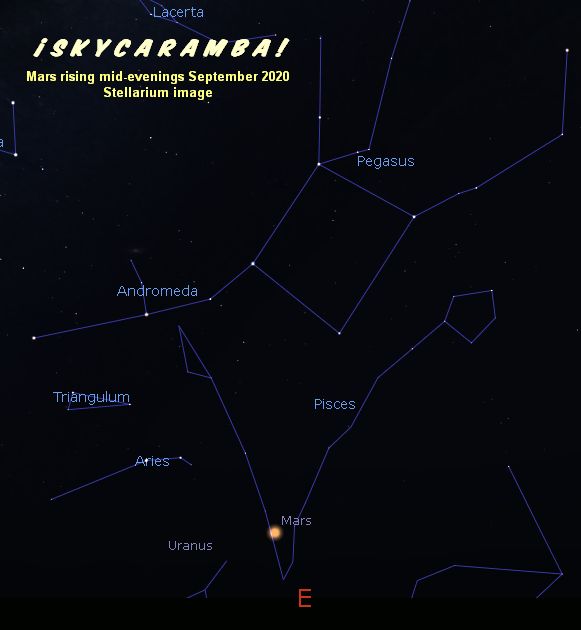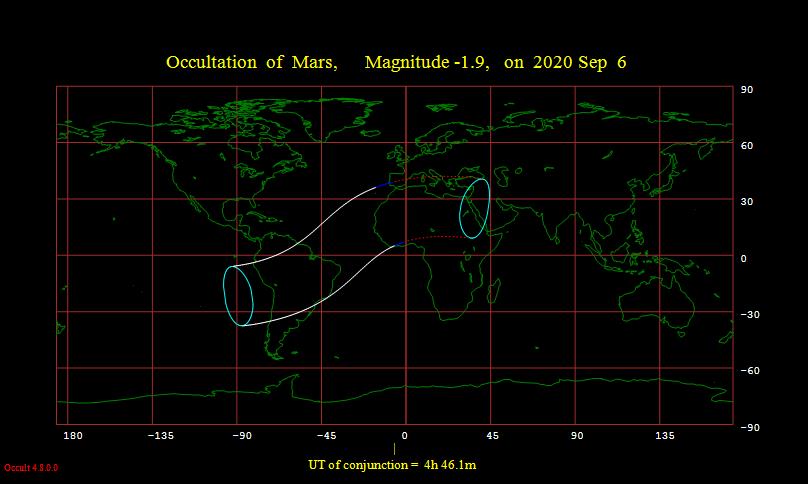
Mercury is a horizon hugger this month. Try to see it in the west just after sunset. It won’t be easy. You’ll probably need binoculars or a telescope to see it against the sunset’s light. The planet doesn’t make much of a journey into the night sky this orbit, so you’ll have to settle for finding it when it’s not very dark. A thin crescent moon and Spica nearby will help you find the planet on the 18th. A clear horizon and a clear sky are a must. Buildings, trees, and clouds easily block the view of Mercury so close to the horizon.

Jupiter and Saturn are still nearly stationary just east of Sagittarius. Look south in the evenings or southwest a little later. For now, the two planets are holding about the same angular distance from each other. But next month, you’ll see that Jupiter is creeping toward Saturn. In December, they’ll have a super close conjunction just 0.1° apart. Start watching them now and savor what is to come!

Mars rises in Pisces in mid-evening. It will stay there all month, moving kind of back and forth between the fish close to where they’re connected. First it’s going eastward (direct motion). The planet is moving slowly enough by the 8th, some astronomers would say it’s stationary. But a few nights later, it’s moving westward (retrograde motion) fast enough to almost cross the line of stars in the other fish by the end of the month. Mars will cross the line and then travel along the length of the western fish toward its head getting almost halfway there before it turns around in November.

The moon passes in front of Mars on the 6th. Visibility for the occultation is in South America. It goes from southern Ecuador to central Chile on the west coast to Suriname to a place in southern Brazil on the east coast. It’s also visible in a wide path across the Atlantic Ocean toward the Cape Verde Islands.

Venus is a morning object, leaving Gemini as September starts. It moves quickly into Gemini, passing south of Asellus Australis on the 14th. The planet then rushes toward Leo for a rendezvous with Regulus on October 2nd and 3rd. The two will be just 0.1° apart at their closest. Best viewing will be from the Pacific and Australia.

The moon’s phases this month: full on the 2nd, last quarter on the 10th, new on the 17th, first quarter on the 24th.
The moon’s declination’s this month: goes north of the equator on the 4th, northern lunistice at 24.4° on the 12th, on the equator going south on the 18th, and southern lunistice 24.5° on the 24th.
The moon is at apogee on the 6th 405,600 km or 252,000 miles from the earth, center-to-center. Perigee is on the 18th at 359,000 km or 223,100 miles.
Mars has its southern solstice on the 2nd. Mercury is at aphelion on the 19th at 0.467 astronomical units from the sun. Earth’s equinox is on the 22nd at 13:31 UT.
Notable conjunctions in September:
3rd – Neptune and the moon 3.9°
6th – Mars and the moon 0.0°
7th – Uranus and the moon 3.1°
9th – Moon and Aldebaran 4.1°
13th – Moon and Pollux 4.3°
14th – Venus and the moon 4.4°
15th – Moon and Regulus 4.1°
19th – Mercury and the moon 5.9°
22nd – Mercury and Spica 0.3°
25th – Jupiter and the moon 2.3°
25th – Saturn and the moon 2.3°
30th – Neptune and the moon 3.9°
